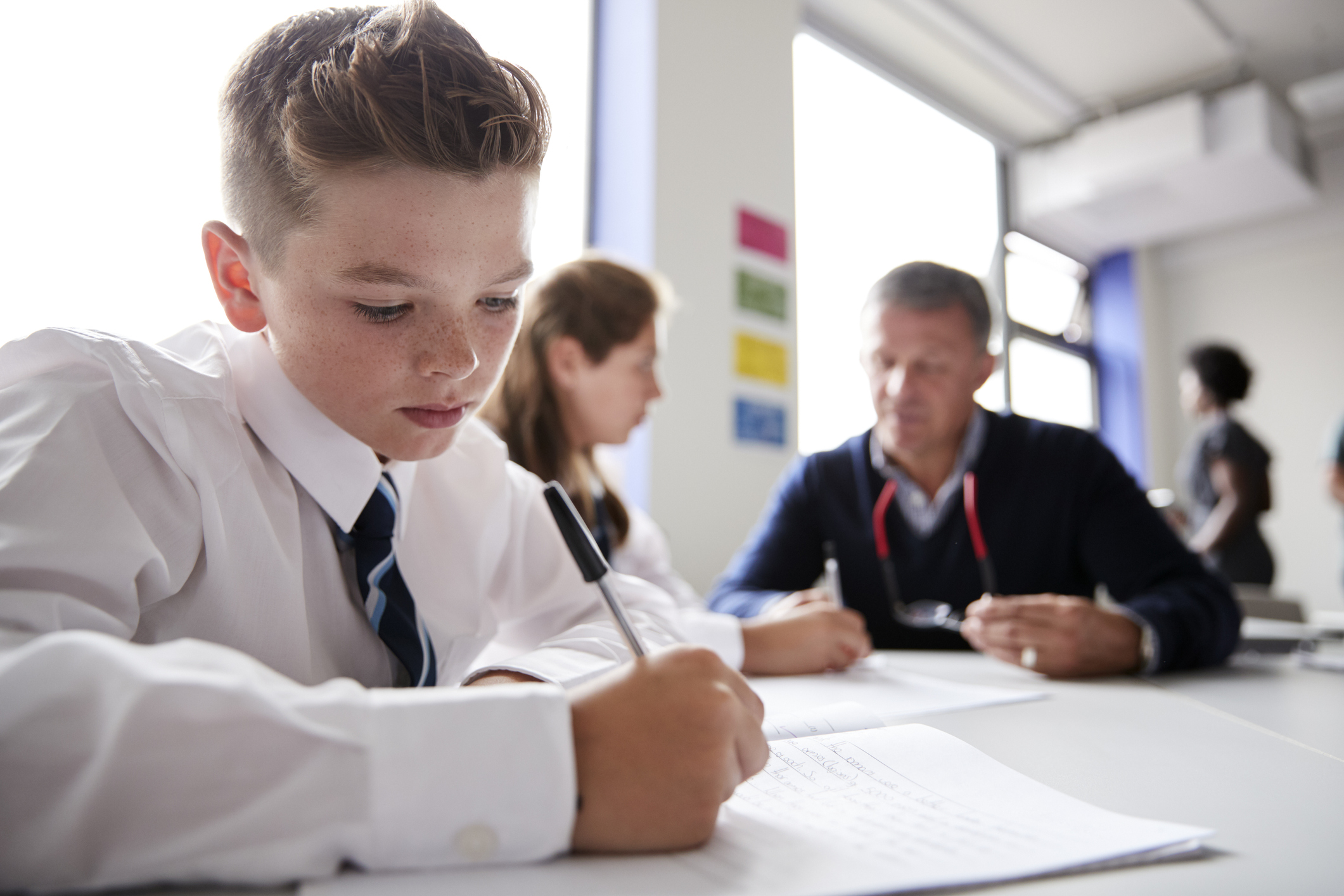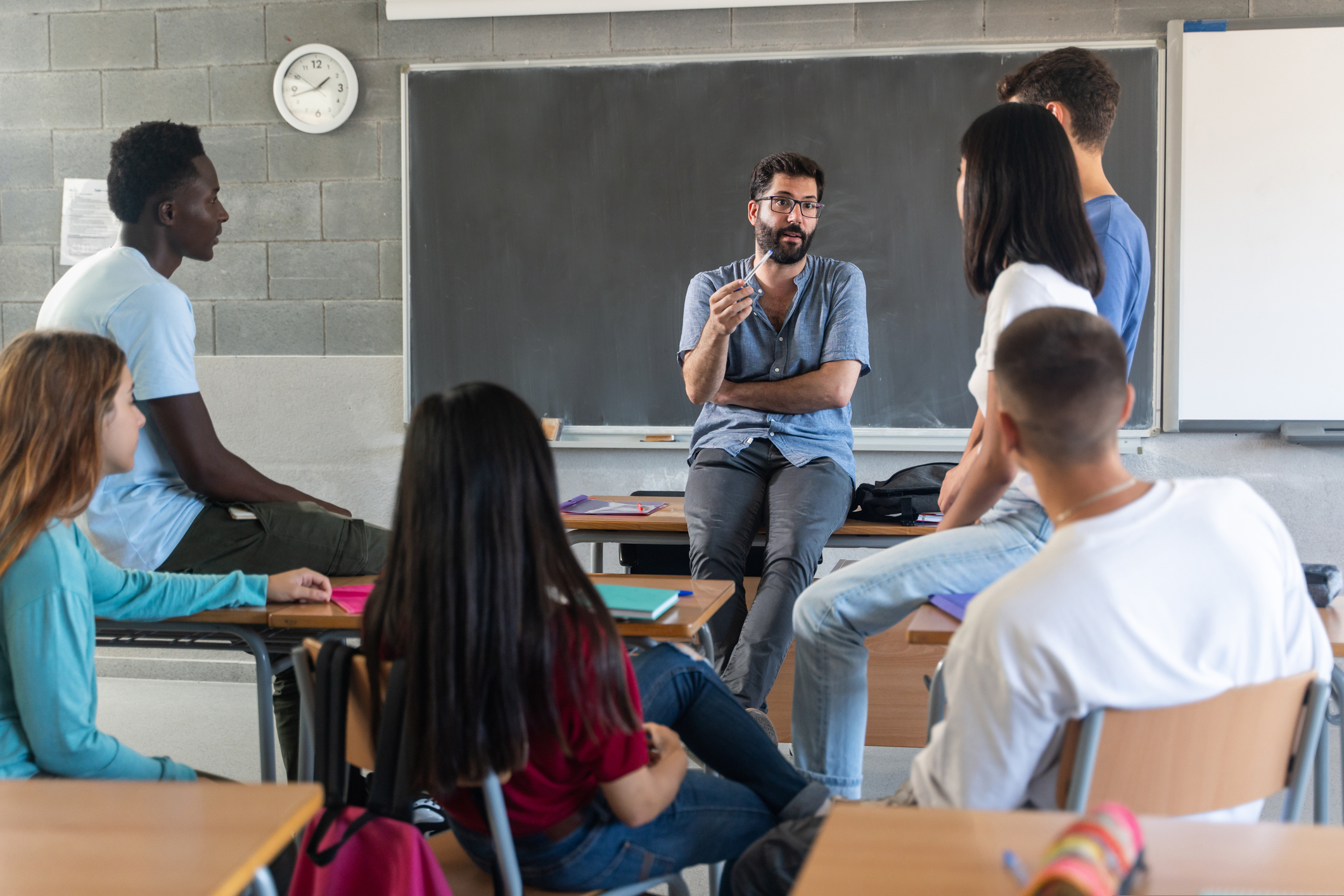Trauma can have a profound impact on a person’s ability to learn and thrive in a classroom environment. When students have experienced trauma, whether it be from abuse, neglect, violence, or other adverse experiences, their ability to focus, regulate their emotions, and engage in learning can be significantly compromised. As educators, we must understand the impact of trauma on learning and take proactive steps to create trauma-sensitive classroom environments.
In this blog post, we will explore the various ways in which trauma can affect learning and behaviour. We will delve into the importance of establishing trauma-informed classrooms, where students feel safe, supported, and understood. We will discuss the elements of a trauma-informed classroom and provide strategies for creating such an environment.
Additionally, we will examine teaching strategies specifically tailored to meet the needs of trauma-affected students. Understanding their unique needs and implementing effective teaching strategies can make a significant difference in their educational journey. We will explore how to create safe learning spaces that foster healing and growth.
Furthermore, we will discuss the crucial role that school staff and peers play in supporting trauma-affected students. From teachers to counsellors to administrators, we will explore how each member of the school community can contribute to creating a supportive environment that promotes resilience and academic success.
Lastly, we will delve into the implementation of trauma-informed practices in schools. We will highlight the importance of training and professional development for staff, the role of school leadership in driving change, and the need to evaluate the impact of trauma-informed practices.
By the end of this blog post, you will have a comprehensive understanding of the impact of trauma on learning and the steps needed to create trauma-sensitive classroom environments. Together, let us create spaces where all students can thrive, regardless of their past experiences.
Understanding Trauma: Its Impact on Learning and Behavior
Understanding Trauma: Its Impact on Learning and Behavior
Trauma is a deeply distressing or disturbing experience that overwhelms an individual’s ability to cope. It can result from various adverse events such as physical or emotional abuse, neglect, natural disasters, witnessing violence, or experiencing a significant loss. When students have experienced trauma, it can have a profound impact on their ability to learn and behave in the classroom.
- The Effects of Trauma on the Brain:
- Trauma can impact the development and functioning of the brain, particularly the areas responsible for learning, memory, and emotional regulation.
- The amygdala, the brain’s fear centre, may become hyperactive, leading to heightened emotional responses and difficulty with emotional regulation.
- The prefrontal cortex, responsible for executive functions such as decision-making and impulse control, may be impaired, affecting a student’s ability to focus and engage in learning tasks.
- Behavioural Manifestations of Trauma:
- Students who have experienced trauma may display a range of behavioural manifestations in the classroom.
- They may exhibit hyperarousal, constantly being on edge, easily triggered, and demonstrating a fight-or-flight response.
- Alternatively, some students may display hyperarousal, appearing withdrawn, disengaged, and emotionally numb.
- Trauma-affected students may also struggle with self-regulation, leading to impulsive behaviours, difficulty following rules, and challenges with social interactions.
- Learning Challenges:
- Trauma can significantly impact a student’s ability to learn and retain information.
- Difficulties with attention and concentration may make it challenging to focus on academic tasks.
- Memory problems may arise, particularly with recalling information or organising thoughts.
- Trauma-affected students may struggle with academic performance, leading to gaps in their learning.
- Emotional Well-being:
- Trauma can contribute to emotional difficulties, including anxiety, depression, and low self-esteem.
- Emotional distress can further impede a student’s ability to engage in learning and form positive relationships with peers and teachers.
- Creating a supportive and nurturing environment is crucial for promoting emotional well-being and academic success.
Understanding the impact of trauma on learning and behaviour is the first step in creating trauma-sensitive classroom environments. By recognising the challenges trauma-affected students face, educators can implement strategies to support their unique needs and foster a safe and inclusive learning environment. In the following sections, we will explore how to establish trauma-informed classrooms and implement effective teaching strategies for these students.
Establishing a Trauma-Informed Classroom
Establishing a Trauma-Informed Classroom
Creating a trauma-informed classroom is essential to support the needs of trauma-affected students and create an inclusive learning environment for all. A trauma-informed classroom recognizes the impact of trauma on students’ lives and implements strategies to promote safety, trust, and emotional well-being. In this section, we will explore why a trauma-informed classroom is necessary, the key elements of such a classroom, and strategies for establishing one.
Why a Trauma-Informed Classroom is Necessary
- Promoting Safety and Trust:
- Trauma-affected students need to feel safe and secure in the classroom environment.
- A trauma-informed classroom fosters a sense of physical and emotional safety, providing a predictable and consistent environment where students can trust their teachers and peers.
- Building Relationships and Connection:
- Positive relationships with teachers and peers are vital for trauma-affected students’ healing and growth.
- A trauma-informed classroom emphasises building connections, fostering a sense of belonging, and promoting positive social interactions.
- Supporting Emotional Well-being:
- Trauma can leave lasting emotional scars on students, impacting their overall well-being.
- A trauma-informed classroom prioritizes emotional support, creating a space where students feel heard, validated, and understood.
Elements of a Trauma-Informed Classroom
- Knowledge and Awareness:
- Educators need to be knowledgeable about trauma, its impact on students, and the principles of trauma-informed care.
- Understanding trauma and its effects allows teachers to respond appropriately and empathetically to students’ needs.
- Sensory Considerations:
- Trauma can heighten sensory sensitivities, making certain stimuli overwhelming for students.
- A trauma-informed classroom takes into account sensory needs, providing a calm and regulated environment that minimizes triggers.
- Clear and Consistent Expectations:
- Establishing clear and consistent expectations helps create a sense of safety and predictability for students.
- Rules and routines should be communicated clearly and reinforced consistently to provide structure and stability.
- Emotional Regulation and Self-Care:
- Teaching students strategies for emotional regulation and self-care is crucial in a trauma-informed classroom.
- Providing tools such as mindfulness exercises, relaxation techniques, and coping strategies can help students manage their emotions effectively.
Strategies for Establishing a Trauma-Informed Classroom
- Professional Development and Training:
- Teachers and staff should receive training on trauma-informed practices to enhance their understanding and skills in supporting trauma-affected students.
- Professional development opportunities can provide valuable insights and strategies for creating a trauma-informed classroom.
- Collaborative Approach:
- Collaboration among all stakeholders, including teachers, administrators, counsellors, and support staff, is essential in establishing a trauma-informed classroom.
- Regular team meetings and open communication can facilitate the implementation of trauma-informed practices and provide ongoing support for students.
- Individualized Support Plans:
- Creating individualized support plans for trauma-affected students helps address their specific needs and provides targeted interventions.
- These plans should be developed collaboratively with input from the student, their family, and relevant school personnel.
By establishing a trauma-informed classroom, educators can create an environment that supports the healing and growth of trauma-affected students. In the next section, we will explore teaching strategies specifically tailored to meet the needs of these students and promote their academic success.
Teaching Strategies for Trauma-Affected Students
Teaching Strategies for Trauma-Affected Students
When working with trauma-affected students, it is crucial to employ teaching strategies that address their unique needs and support their academic success. These strategies go beyond traditional teaching methods and take into account the impact of trauma on learning, behaviour, and emotional well-being. In this section, we will explore the importance of understanding the needs of trauma-affected students, effective teaching strategies to implement in the classroom, and creating safe learning spaces.
Understanding the Needs of Trauma-Affected Students
- Building Trust and Rapport:
- Building a trusting relationship with trauma-affected students is foundational to their learning and growth.
- Take time to establish rapport, demonstrate empathy, and create a safe and non-judgmental environment where students feel comfortable sharing their experiences.
- Providing Predictability and Structure:
- Trauma can disrupt a student’s sense of safety and control. Providing predictability and structure in the classroom can help restore a sense of stability.
- Maintain consistent routines, clearly communicate expectations, and provide visual schedules and reminders to help students feel secure.
- Individualized Instruction:
- Recognize that trauma-affected students may have gaps in their learning and tailor instruction to meet their individual needs.
- Provide additional support, differentiation, and accommodations as necessary to ensure all students can access the curriculum.
Effective Teaching Strategies for Trauma-Affected Students
- Trauma-Informed Pedagogy:
- Incorporate trauma-informed practices into your teaching approach.
- Use a strengths-based perspective, focusing on students’ resilience and abilities rather than their deficits.
- Create a supportive and inclusive classroom culture that encourages collaboration, respect, and appreciation for diversity.
- Incorporating Movement and Mindfulness:
- Engage trauma-affected students in movement activities and mindfulness exercises to promote self-regulation and reduce anxiety.
- Incorporate brain breaks, physical exercises, and mindfulness techniques throughout the day to help students manage stress and improve focus.
- Multi-Sensory Learning:
- Utilize a variety of sensory modalities to enhance learning experiences.
- Incorporate visual aids, manipulatives, hands-on activities, and technology to engage different learning styles and reinforce concepts.
- Encouraging Expression and Creativity:
- Provide opportunities for trauma-affected students to express themselves creatively.
- Use art, writing, drama, and other forms of expression to help students process their emotions, build self-esteem, and develop communication skills.
Creating Safe Learning Spaces
- Safe Zones or Calming Corners:
- Designate a specific area in the classroom where students can retreat when feeling overwhelmed or anxious.
- Create a calming corner with comfortable seating, sensory tools, and materials for self-soothing activities.
- Emotional Check-Ins:
- Begin each day or class session with a brief emotional check-in to allow students to express how they are feeling.
- Provide a safe space for students to share their emotions and validate their experiences.
- Cultivating a Supportive Peer Community:
- Foster a sense of belonging and support among students.
- Encourage kindness, empathy, and peer support through cooperative learning activities, group projects, and class discussions.
By implementing these teaching strategies and creating safe learning spaces, educators can empower trauma-affected students to thrive academically and emotionally. In the next section, we will explore the crucial role that school staff and peers play in supporting trauma-affected students and building a supportive school community.
Supporting Trauma-Affected Students: Role of School Staff and Peers
Supporting Trauma-Affected Students: Role of School Staff and Peers
Creating a supportive environment for trauma-affected students requires the collective effort of school staff and peers. School staff members, including teachers, administrators, counsellors, and support staff, play a crucial role in understanding and meeting the needs of these students. Additionally, peers can contribute significantly to the well-being and success of their trauma-affected classmates. In this section, we will explore the role of school staff in supporting trauma-affected students, the role of peers, and the importance of building a supportive school community.
The Role of School Staff in Supporting Trauma-Affected Students
- Education and Training:
- School staff members should receive education and training on trauma-informed practices, recognizing the signs of trauma, and understanding the impact of trauma on learning and behaviour.
- This knowledge equips staff members with the skills and tools needed to provide appropriate support and create a safe and nurturing environment.
- Identifying and Referring:
- School staff should be vigilant in identifying signs of trauma and identifying students who may need additional support.
- Establish clear protocols for referring trauma-affected students to appropriate support services, such as counsellors, social workers, or outside agencies.
- Building Relationships:
- School staff should strive to build positive and trusting relationships with trauma-affected students.
- Show empathy, listen attentively, and provide a safe space for students to share their experiences and concerns.
- Building strong relationships can help students feel supported and increase their engagement in the learning process.
- Individualized Support:
- Collaborate with other staff members and the student’s support team to develop individualized support plans.
- Implement strategies that address the specific needs of trauma-affected students, such as academic accommodations, emotional regulation techniques, and support during transitions.
The Role of Peers in Supporting Trauma-Affected Students
- Empathy and Understanding:
- Encourage peers to develop empathy and understanding towards their trauma-affected classmates.
- Foster a culture of acceptance and inclusion, where students can learn about trauma and its effects to cultivate empathy.
- Peer Support Networks:
- Create opportunities for peer support networks, such as mentoring programs or buddy systems, where trauma-affected students can connect with supportive peers.
- Encourage students to be respectful, kind, and inclusive, and guide how they can support their classmates.
- Anti-Bullying Initiatives:
- Foster a school-wide anti-bullying culture that protects trauma-affected students from further harm.
- Provide education on the impact of bullying and promote kindness, respect, and empathy among peers.
Building a Supportive School Community
- Collaboration and Communication:
- Establish a collaborative approach among school staff, parents, and community members to support trauma-affected students.
- Regularly communicate and share information, ensuring a coordinated effort in meeting students’ needs.
- Professional Development and Support for Staff:
- Provide ongoing professional development opportunities for staff to enhance their knowledge and skills in supporting trauma-affected students.
- Offer support and resources to staff members to help them manage their emotional well-being while supporting students.
- Engaging Families:
- Involve families in the support process by maintaining open lines of communication and providing resources and information.
- Collaborate with families to develop strategies that can be implemented at home to reinforce the trauma-informed approach.
By recognizing the vital role of school staff and peers in supporting trauma-affected students and building a supportive school community, we can create an environment in which these students can heal, thrive, and reach their full potential. In the next section, we will explore the implementation of trauma-informed practices in schools, including the importance of training and professional development for staff, the role of school leadership, and evaluating the impact of trauma-informed practices.
Implementing Trauma-Informed Practices in Schools
Implementing Trauma-Informed Practices in Schools
To create a truly trauma-sensitive environment, it is essential to implement trauma-informed practices throughout the entire school. This section will explore the importance of training and professional development for staff, the role of school leadership in driving change, and the evaluation of the impact of trauma-informed practices.
Importance of Training and Professional Development for Staff
- Understanding Trauma-Informed Care:
- Provide comprehensive training on trauma-informed care for all school staff members.
- Educate staff on the effects of trauma, trauma-informed principles, and strategies for supporting trauma-affected students.
- Training should be ongoing to ensure staff members stay up-to-date with the latest research and best practices.
- Building Skills and Strategies:
- Offer professional development opportunities that equip staff with practical skills and strategies for implementing trauma-informed practices.
- Provide training on topics such as trauma-sensitive classroom management, de-escalation techniques, and supporting students’ emotional well-being.
- Collaborative Learning Communities:
- Foster collaborative learning communities within the school, where staff can share experiences, insights, and best practices.
- Encourage regular meetings, case consultations, and peer support to enhance professional growth and the implementation of trauma-informed practices.
Role of School Leadership in Implementing Trauma-Informed Practices
- Creating a Vision and Culture:
- School leaders should establish a clear vision for trauma-informed practices and communicate it to all stakeholders.
- Foster a culture of empathy, support, and continuous improvement throughout the school community.
- Providing Resources and Support:
- Allocate resources for training, professional development, and the implementation of trauma-informed practices.
- Provide time and support for staff to collaborate, reflect, and engage in ongoing learning.
- Collaboration with Community Partners:
- School leaders should collaborate with community partners, such as mental health professionals and social service agencies, to access additional resources and support for trauma-affected students.
Evaluating the Impact of Trauma-Informed Practices
- Data Collection and Analysis:
- Establish a system for collecting and analysing data related to the implementation of trauma-informed practices.
- Monitor academic outcomes, behavioural indicators, and student well-being to assess the effectiveness of the practices.
- Feedback and Reflection:
- Encourage staff to provide feedback and reflect on the impact of trauma-informed practices.
- Regularly seek input from students, teachers, and families to ensure the practices are responsive to their needs.
- Continuous Improvement:
- Use collected data and feedback to make informed decisions and continuously improve trauma-informed practices.
- Adjust strategies, interventions, and supports based on the evaluation findings to better meet the needs of trauma-affected students.
By prioritizing training and professional development for staff, empowering school leadership to drive change, and evaluating the impact of trauma-informed practices, schools can create a sustainable and effective approach to supporting trauma-affected students. Together, we can create learning environments where all students can thrive, heal, and reach their full potential.







